The Philippines is known throughout the world not only for its majestic natural destinations but for its vibrant and energetic celebrations that occur throughout the year in different parts of the country. Most of these celebrations have even drawn more tourists to the country to participate and revel with the fun-loving Filipino people.
The reason for the country’s many festivals is due to the mixed influences to the country in the course of its history. These colorful festivals are mainly historical, cultural, and religious, or are just a celebration of the many passions of the Filipino people.
You’ve never really fully experienced true Filipino if you’ve never participated in any of the Philippine Festivals so let’s explore 10 of the country’s most attended festivals.
1. Sinulog Festival
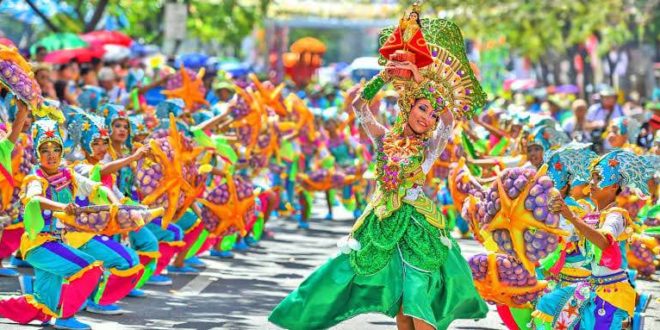
Date: Third Sunday of January
Location: Cebu City
The Sinulog Festival of Cebu is one of the most visited festivals in the country as the locals and foreigners mingle and party on the streets of the city. It attracts about 1 to 2 million visitors from different parts of the world and lets tourists experience Cebu City in a different light. Aside from the cultural festival, there are other things to be excited about during this short celebration such as various bands playing and the city-wide street parties.
Sinulog is celebrated in honor of one of the country’s most famous historic relics: the Santo Niño de Cebu. It is a statue of the baby Jesus which was passed down to Raja Jumabon by Ferdinand Magellan – an important event paving the way for Christianity into the country. The famous Sinulog dance step consisting of two steps forward and one step back is said to be the movements of the river.
2. Ati-Atihan Festival
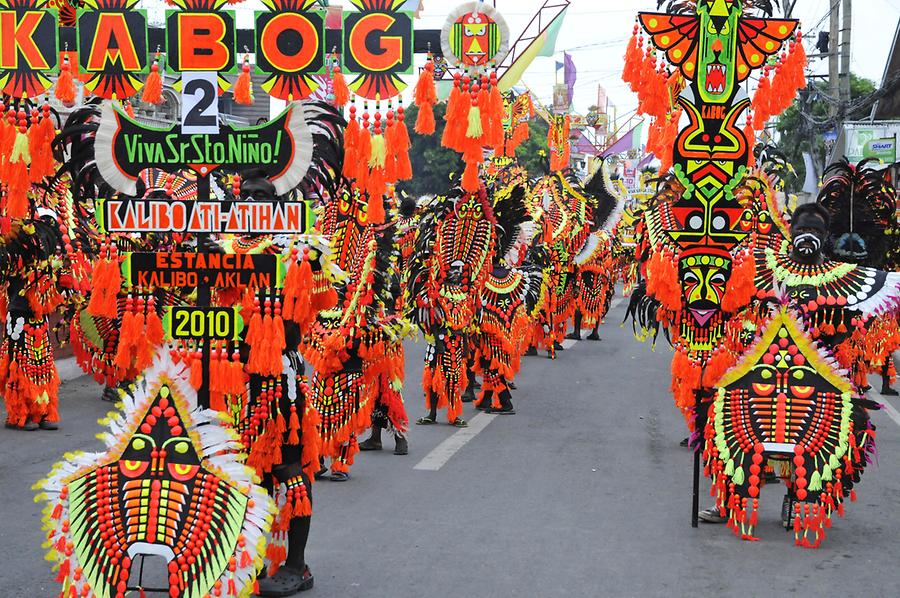
Date: Third Sunday of January
Location: Aklan
Ati-Atihan Festival is one of the oldest celebrations in the Philippines and is considered as the biggest festivity in the country. Akin to Cebu’s Sinulog, this festival celebrates the child Jesus. The celebration lasts a full 7 days with its peak being on the actual date of celebration. Vibrant painted faces and cultural costumes fill the streets of Aklan and march along the streets of Kalibo. Ati-atihan consists of multiple events that happen in the different parts of Kalibo such marching bands, masses, and street parties. Aside from visiting the world-famous Boracay, this festival should definitely be another thing to experience when in Aklan.
3. Pahiyas Festival
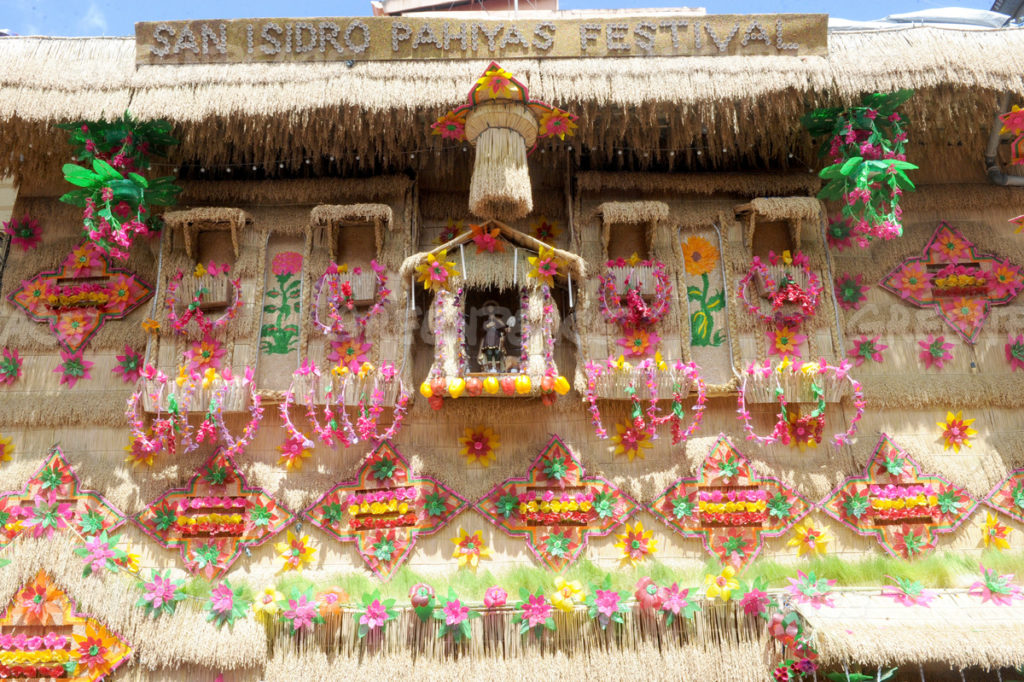
Date: May 14-15
Location: Lucban, Quezon
One of the prides of Quezon, this annual harvest festival fills the streets of the province with every fruit and vegetable mentioned in “Bahay Kubo”. Pahiyas comes from the word “payas” which means to decorate. The origin of this festival dates back to the 15th century when the farmers used to offer their harvests at the foot of Mount Banahaw. In short, the festival is celebrated as gratitude for the bountiful harvests of the province.
The highlight of this festival are the houses donned with different fruits, vegetables, and the colorful kiping and is evaluated for the best design. The best part comes after when people come out with their fruit baskets and “harvest” anything that’s on display.
4. Panagbenga Festival
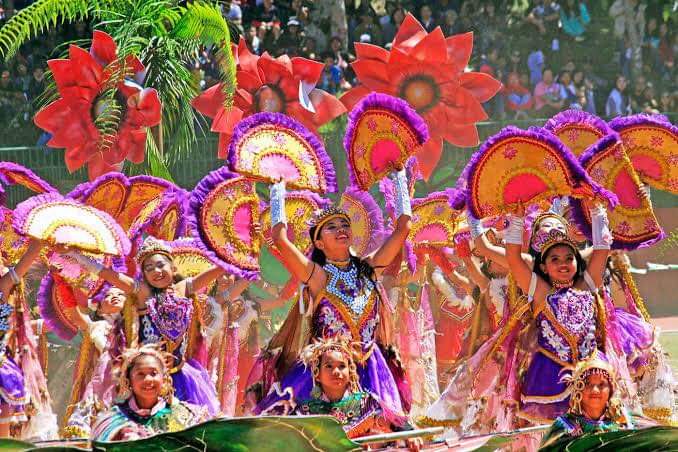
Date: February 1 – March 4
Location: Baguio City
The Panagbenga Festival is celebrated to usher in the “season of blooming”. It is a festival that transforms the people and the city into themes of flora and fauna. Parades with floral designs fill the streets and even children are adorned with flower costumes.
The festival was first celebrated as a symbol of their recovery from a devastating earthquake that hit the mountain province – a moment of “blooming” from tragedy. Now, visitors participate in the festival for the colorful parades of flower-themed floats and florally adorned children.
5. Kadayawan Festival
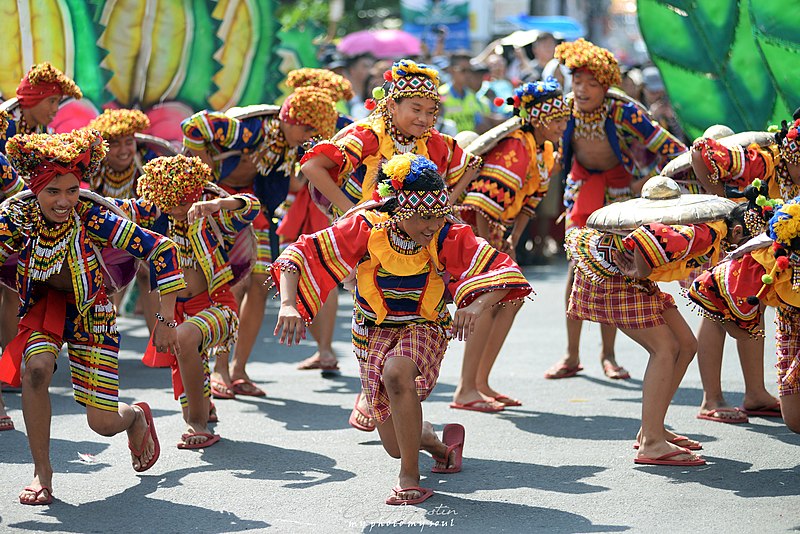
Date: Third week of August
Location: Davao City
Kadayawan Festival is a celebration of Davao Culture and brings together locals and visitors alike with rhythmic street dancing, good food, drinks and great company. Davaoeños put all their effort into making sure that their festival gets better every year. Just like the Pahiyas Festival, people from Davao come together to perform annual thanksgiving rituals for the gift of nature and bountiful harvests. The festival is composed of a myriad of thanksgiving rituals such as dancing and displaying harvests at the front door. These small thanksgiving rituals have now evolved into one of the most anticipated festivals in the country.
Kadayawan comes from the word “madayaw” which means “to value” or “to be grateful”. Similar to many festivals of the country, the streets are filled with shouts of revelry and jovial parades. Aside from the usual street dancing, the city also hosts horse fights, beauty pageants, and boat races.
6. Masskara Festival
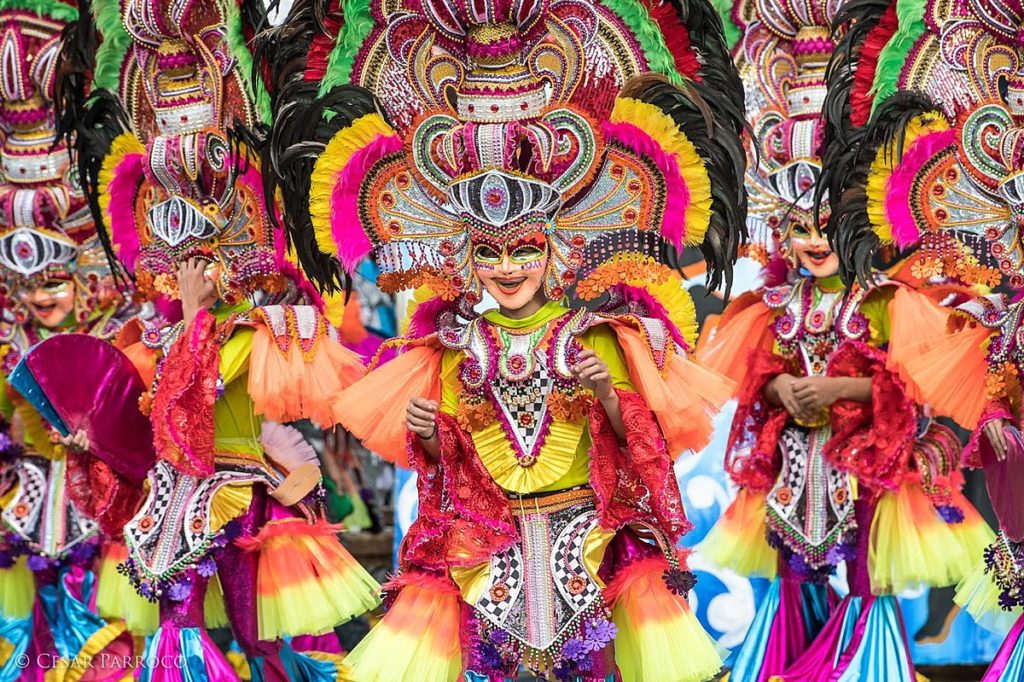
Date: October
Location: Bacolod City
The Masskara Festival is a literal translation of it’s name, the parading of grandiose masks with different faces on the streets of Bacolod City. This colorful festival is a giant masquerade party with thousands of heavily and artistically designed masks being paraded in the streets with big smiles. It is also likened to Brazil’s Rio Carnival with the lively music and colors filling every corner of the street. Locals and visitors enjoy the 20 days replete with local food, drinks, dances and different competitions that liven the city. There are also unique contests like chasing after pigs and chugging coconut milk that give the audience a good time. The festival depicts the city’s resiliency with “big smiles” despite the hardships of life.
7. Moriones Festival
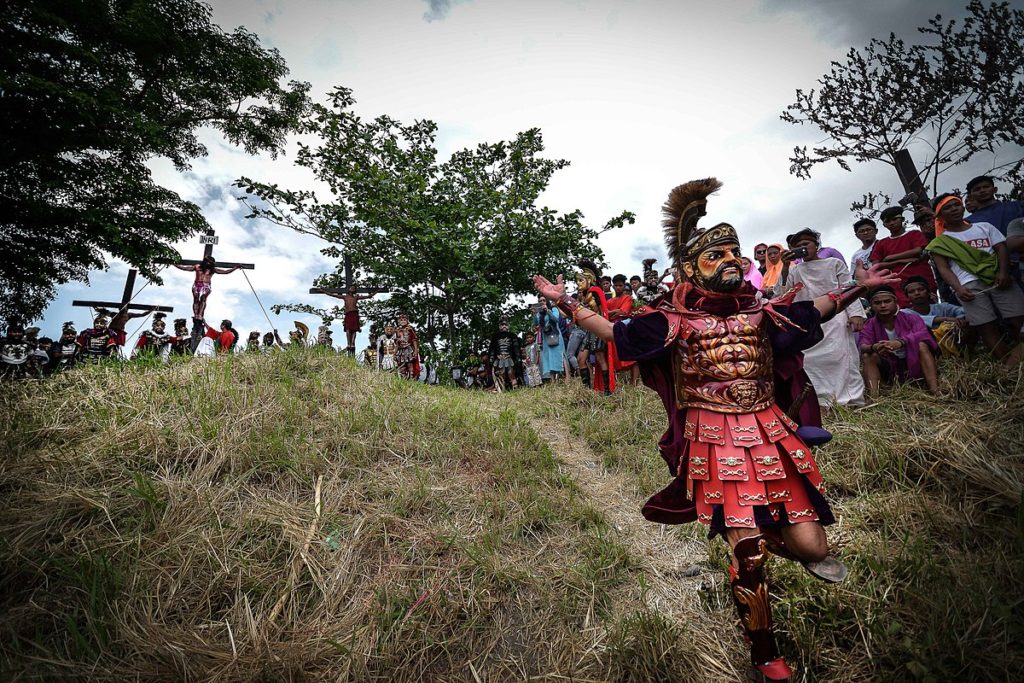
Date: During the Holy Week in March or April
Location: Marinduque
The Moriones Festival is a religious festival that combines Catholic pageantry with folk mysticism. It is a week-long celebration with a city-wide interpretative performance of the search for Longinus, the Roman soldier who pierced Jesus’ side with a lance during his Crucifixion. The most interesting part of the festival is when the streets turn into a theatrical stage with the locals donning their hand-made Roman centurion costumes and searching for St. Longinus, a Roman soldier who proclaimed his faith in Jesus Christ.
Throughout the festival week, the moriones roam the streets with their wooden swords and shields, engaging in sword fights, dances and occasional pranks on bystanders while looking for St. Longinus who hides in houses and behind spectators.
8. Pintados Festival
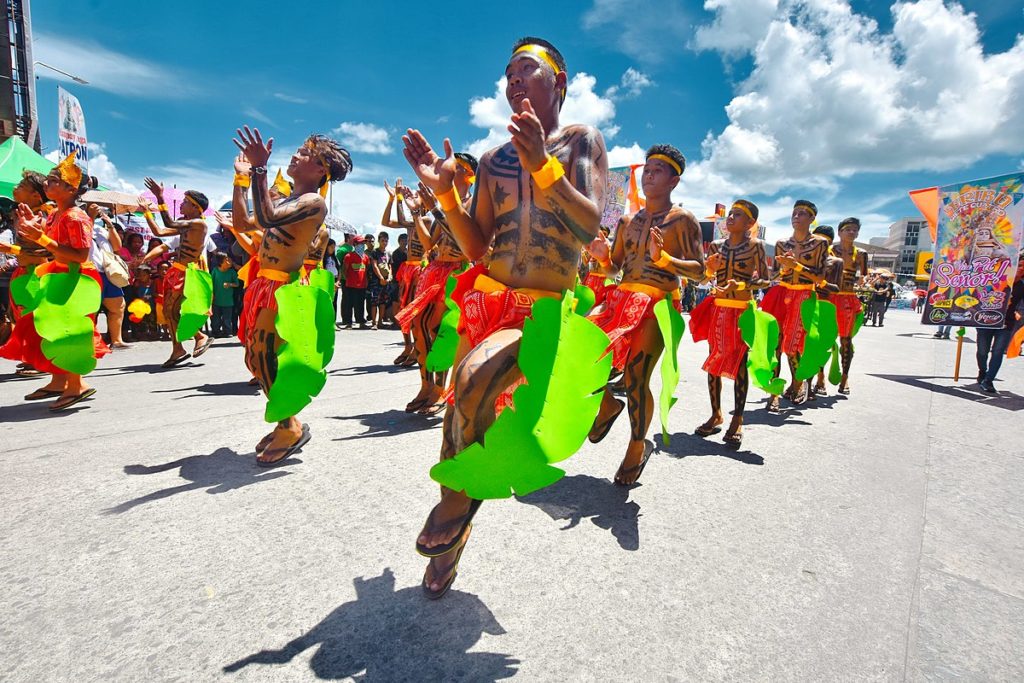
Date: June
Location: Tacloban City
As another festival celebrating the name of Santo Niño, locals parade around the city with their faces and bodies covered in vibrant colors of green and blue symbolizing Leyte’s ancestral people. The festival is a recollection of Leyte’s ancestors during the Pre-Spanish era wherein locals paint their bodies with designs that look like armor to resemble the tattooed warriors of the past. It is a month-long celebration and appreciation of the ancestral people of Leyte with vibrant and lively storytelling through dances by the different municipalities. The festival also hosts a competition in which the different municipalities will retell the story of their home towns through colorful costumes and dances.
9. Aliwan Festival
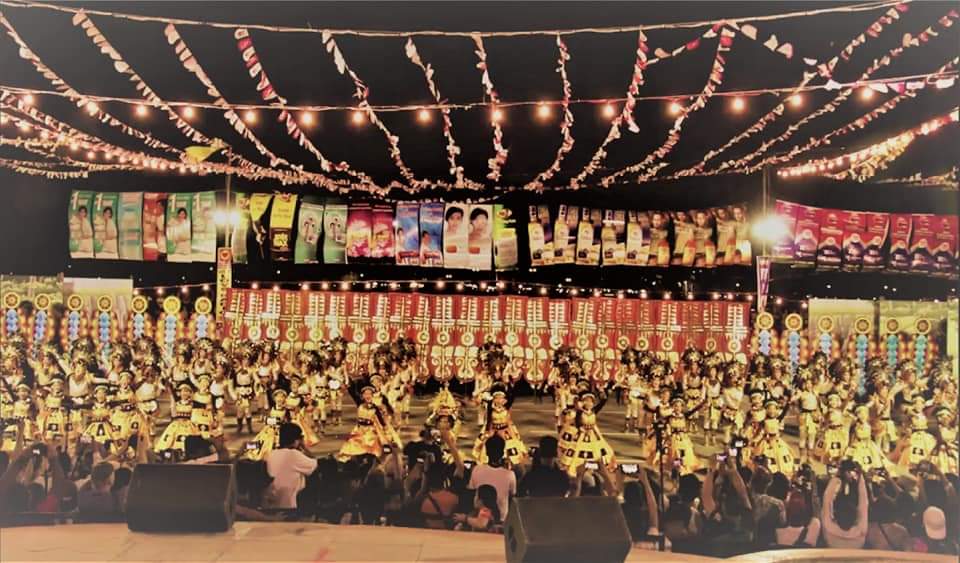
Date: April
Location: Pasay City
Aliwan Festival is one of the newer festivals in the country but one that also captured the hearts of many and named it as the “Mother of all Philippine Festivals”. The festival brings together all the cultures and traditions of the different places in the Philippines to promote the diversity of the country. It is more of a competition than a festival with thousands of participants showcasing their town’s cultures. The best presentation is awarded a prize of P1 million in cash.
10. Dinagyang Festival
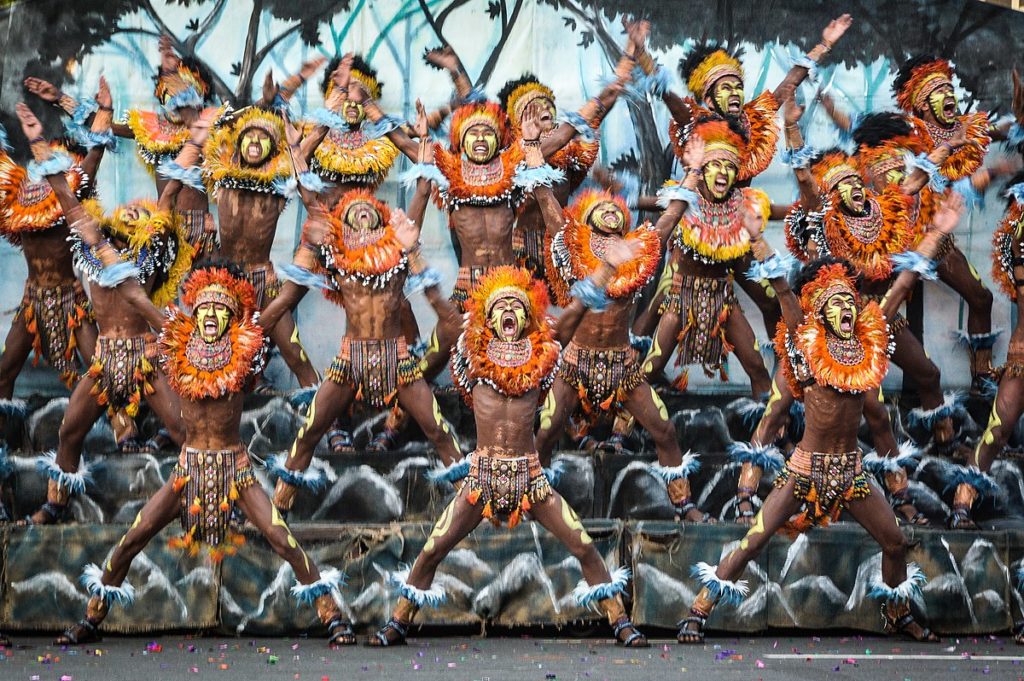
Date: January
Location: Iloilo City
Dinagyang Festival takes street dancing into a whole new level as Iloilo transforms its city into a huge street party complete with bands and street performers everywhere. Dinagyang is word which means “merrymaking” and is another religious festival that celebrates the feast of Santo Niño and the pact between the Datus and the locals. During this festival, the streets are overflowing with food and drinks and grand floats and lively performances. The dance presentations in this festival retell the folklore about the Barter of Panay – a story about how Bornean datus and their families ran from a tyrannical ruler in Borneo which led to their barter with the Aetas. The locals cover their body in soot the same way that the Borneans did in the past as a celebration of the barter. To cap it all off, the organizers hold a competition between schools and barangays on a street dancing contest.


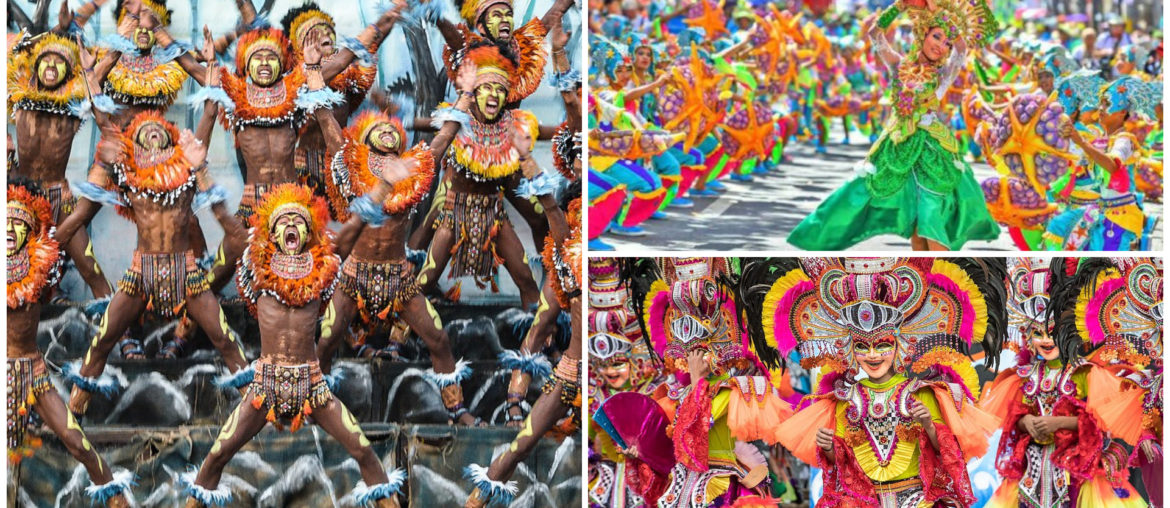
Comments are closed.